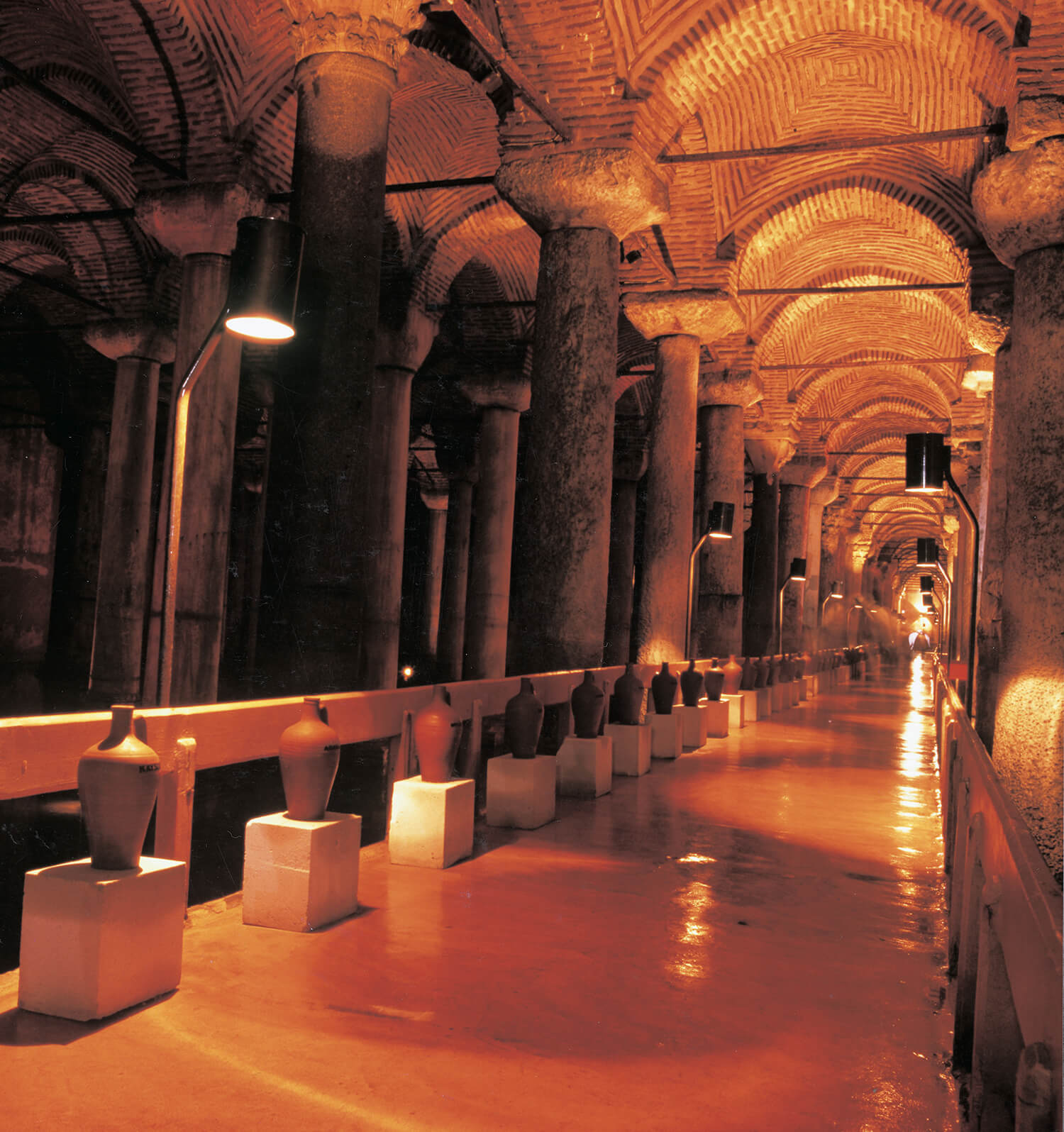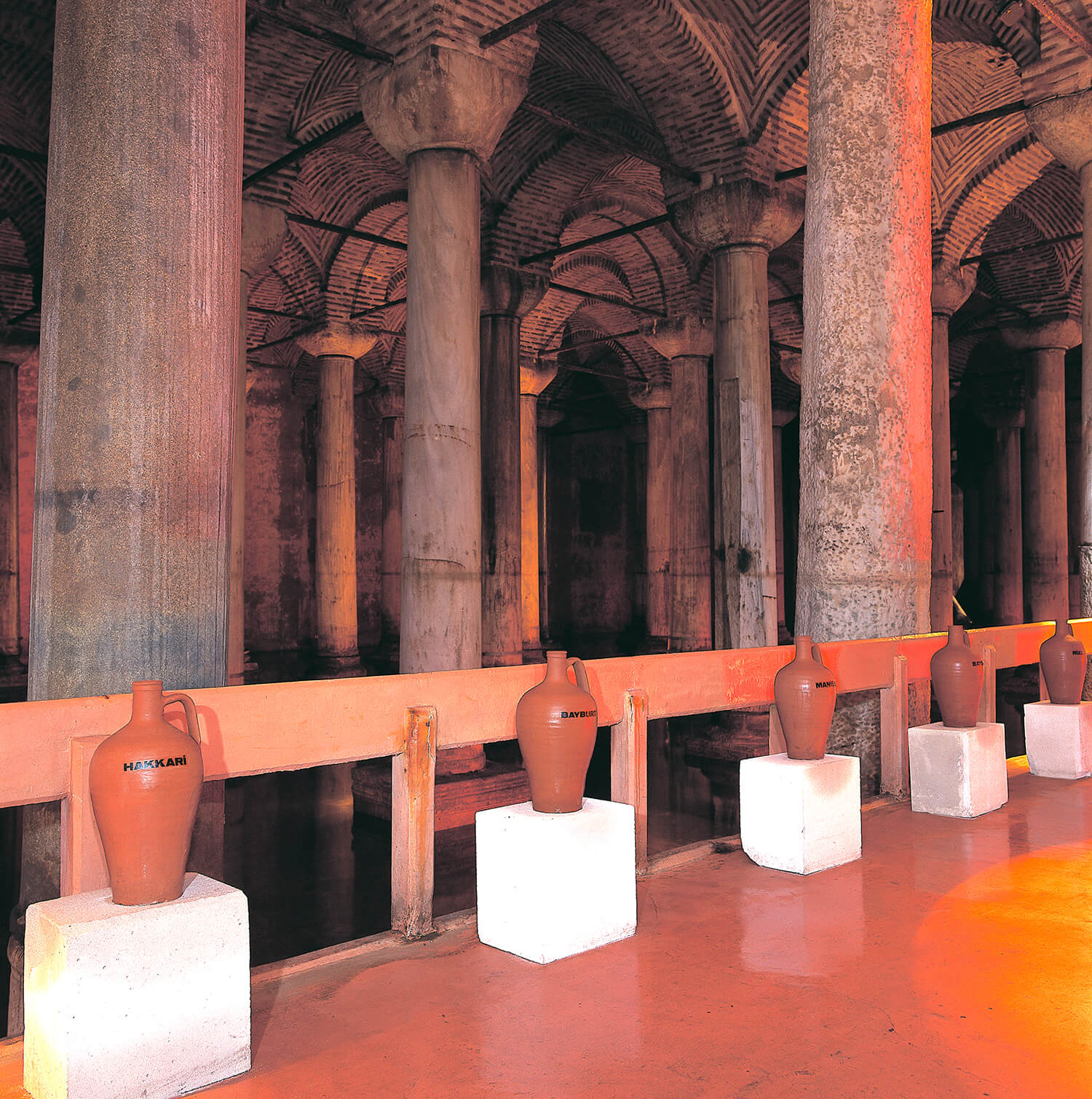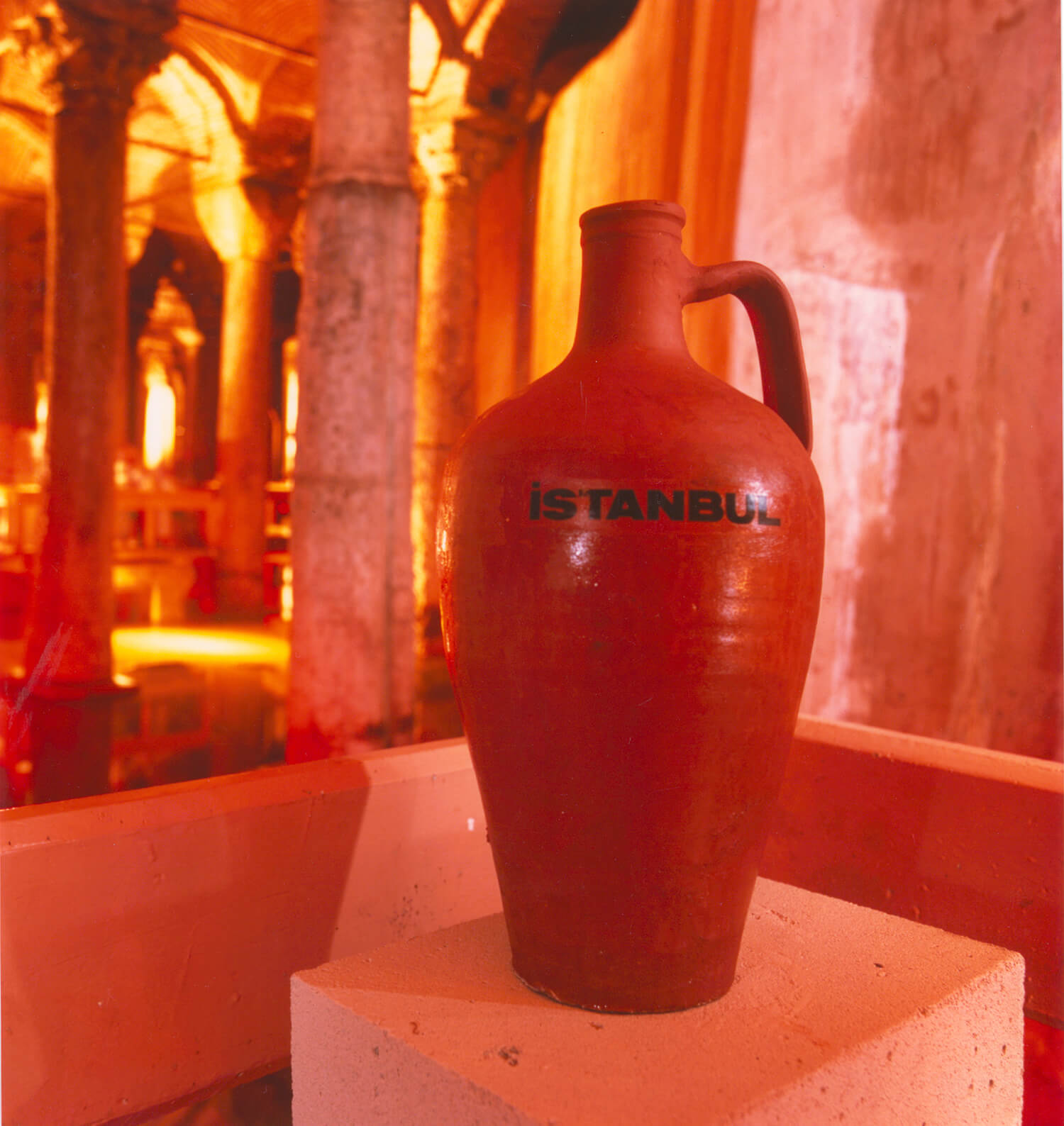1995, Art in Public Space
Developed for BM contemporary Art Center, Yerebatan Cistern, İstanbul, 1995
| / |
Ersen opened her first solo exhibition titled “Dialogues ” at the Yerebatan Cistern in 1995. Upon the scaffolding system floating between the columns of the cistern, the artist had placed clay jugs filled with water from each city in Turkey with the name of the corresponding city written on each jug. The composition of the installation and the choice of water as the material symbolized the amassing of all population centers constituting a country and resources coming from these units in one single center. The clay texture of the jugs allowed for the water to leak out over time and merge into the stupendous head of water in the cistern.
The venue of the exhibit; a cistern that has nourished a city at the heart of three consecutive empires over a thousand years with its water, has undoubtedly had a defining impact on the work. The imperial center drawing all sorts of resources surrounding it (tax revenue, consumer products form different geographies, human resources to be exploited) with the power web it exerts can be directly linked to the installation of the water filled jugs from all cities in the cistern. The republican regime had attempted to change the centralist heterogeneous structure established by the empires preceding it with the Ankara project upon its foundation, however, the historical process had resulted in Istanbul gradually reclaiming its legacy imprinted in memory. The shifting of the political center to Ankara had paradoxically become the advantage of Istanbul, providing the flexibility for the city to become the economic and financial capital of the country. It should also be said that the jugs spread out through the exhibition space in “Dialogues ” do not only signify the hauling of commercial goods and resources to the center. One of the major outcomes of industrialization oriented state policies of the 1950s had been internal migration to big cities, in particular to Istanbul.
When we consider this phenomenon alongside “Dialogues ”, we could say that the jugs lined up one after another and the city names on the jugs symbolize the mass of people coming to Istanbul and places they are coming from. These people who define themselves by belonging to the “hometown” they left behind, but (just as the water in the jugs is bound to dissipate into the atmosphere of the cistern) who in time will be integrated into the texture of the megacity they’ve arrived at; shaping the city and being shaped by it corresponds to the dynamics of interaction, osmosis and transformation known as urbanization. We had witnessed Ersen employ the word dialogue to evoke the relationship between the city and the new arrivals in the titles of her two previous works. Retrospectively, this could be regarded as a vice of repeating oneself, but it should be noted that the use of this word underlines a primary dynamic that is to stretch across Ersen’s entire production and evolve into different concepts in later stages.


